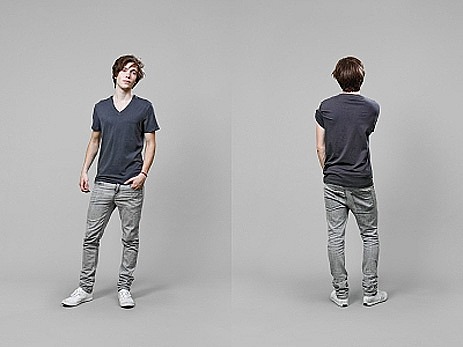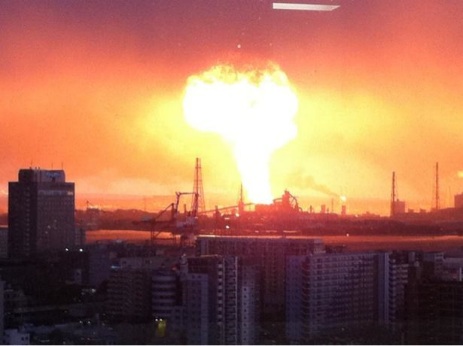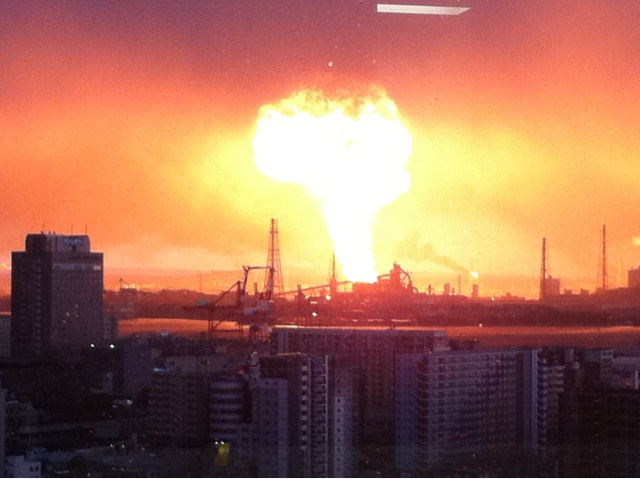 March 11 tsunami leads to an explosion at Chiba Works, an industrial (chemical, steel, etc.) facility in Ichihara, Japan.Photo: @odyssey
March 11 tsunami leads to an explosion at Chiba Works, an industrial (chemical, steel, etc.) facility in Ichihara, Japan.Photo: @odyssey
Update: The intent of this piece isn’t to attribute today’s tragedy to climate change. Apologies to those whom I misled with the headline. It was meant literally, as in: Tsunamis are inundations of shorelines and therefore have impacts that resemble storm surges, which are one of the most immediate threats of a warmer planet. In addition, climate change may cause tsunamis directly, so it’s possible we’ll someday see more images like this as a result.
Update 2: Changed the headline (it originally read “Today’s tsunami: This is what climate change looks like”) and updated the text to reflect the discussion of the science and the framing in the comments. Thanks to Tom Yulsman for holding my feet to the fire on this.
* * *
So far, today’s tsunami has mainly affected Japan — there are reports of up to 300 dead in the coastal city of Sendai — but future tsunamis could strike the U.S. and virtually any other coastal area of the world with equal or greater force, say scientists. In a little-heeded warning issued at a 2009 conference on the subject, experts outlined a range of mechanisms by which climate change could already be causing more earthquakes, tsunamis, and volcanic activity, albeit of a scale and nature quite different from Friday’s tragedy.
A 2009 paper by Bill McGuire, professor at University College London, says “observations suggest that the ongoing rise in global average temperatures may already be eliciting a hazardous response from the geosphere.”
It’s important to note that this response has nothing to do with Friday’s tsunami, which is a ‘subduction zone earthquake,’ whereas the tsunamis discussed by scientists cited here would be the product of catastrophic events — collapse of methane hydrate deposits at the bottom of the ocean on the continental shelf, for example — for which a tsunami would be but one of many negative impacts.
“When the ice is lost, the earth’s crust bounces back up again and that triggers earthquakes, which trigger submarine landslides, which cause tsunamis,” McGuire told Reuters. (McGuire’s 2009 paper notes that such effects will be much more pronounced in areas with significant ice cover, in other words, at higher latitudes.)
Melting ice masses change the pressures on the underlying earth, which can lead to earthquakes and tsunamis, but that’s just the beginning. Rising seas also change the balance of mass across earth’s surface, putting new strain on old earthquake faults, and may have been partly to blame for the devastating 2004 tsunami that struck Southeast Asia, according to experts from the China Meteorological Administration. [This claim is from a secondary source — it was an error to include it.]
Even a simple change in the weather can dramatically affect the earth beneath our feet:
David Pyle of Oxford University said small changes in the mass of the earth’s surface seems to affect volcanic activity in general, not just in places where ice receded after a cold spell. Weather patterns also seem to affect volcanic activity — not just the other way round, he told the conference.
Scientists have known for some time that climate change affects not just the atmosphere and the oceans but also the earth’s crust. These effects are not widely understood by the public.
“In the political community people are almost completely unaware of any geological aspects to climate change,” said McGuire.
This means a world in which we are warming the earth by pumping greenhouse gases into the atmosphere at a pace that is unprecedented in Earth’s history is also a world in which the consequences of climate change could come hard and fast, including tsunamis and earthquakes. The pace of the response of earth’s geosphere to the rapid climate change we are currently experiencing is up for debate. It seems logical that rapid climate change would lead to rapid geological response, as in past eras of climate change as revealed in the fossil record.
Parts of the earth that are now rarely affected by tsunamis, such as northern coastal regions, could be hit by “glacial earthquakes,” in which glacier ice crashes to earth in massive landslides.
“Our experiments show that glacial earthquakes can generate far more powerful tsunamis than undersea earthquakes with similar magnitude,” said Song.
“Several high-latitude regions, such as Chile, New Zealand and Canadian Newfoundland are particularly at risk.”
Of course, by the time such “glacial earthquakes” were occurring, they would be the least of our worries.
“Added to all the rest of the mayhem and chaos, these things would just be the icing on the cake,” [McGuire] said. “Things would be so bad that the odd tsunami or eruption won’t make much difference.”
And now for a bit of editorializing: It’s often difficult to visualize what climate change-related disasters might look like, but the images pouring out of Japan are visually reminiscent of storm surges supercharged by more powerful weather and rising seas, and of course potential climate change-caused tsunamis. (All of America’s coastal cities are vulnerable to these impacts — including, in this remarkable animation, New York City.) Right on the heels of Brisbane, Snowpocalypse, and Australia’s record dust storms, we have yet another reminder of what an Earth transformed by climate change could look like, even though those transformations will play out in ways that are distinct from Friday’s tragedy.
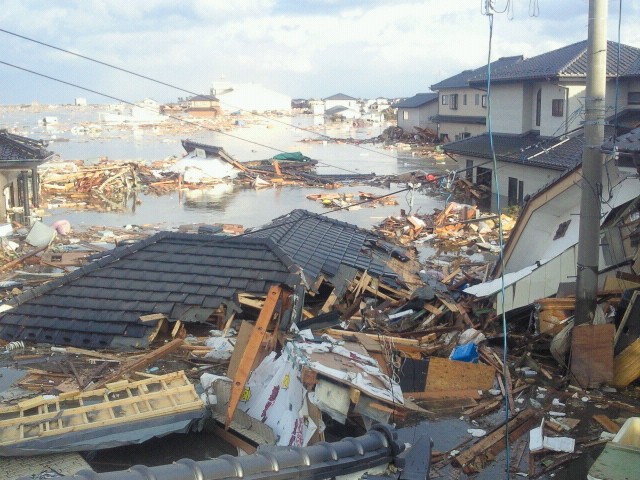 “Immediately after the tsunami came. 2 taken from their homes. They are left still under water! Rescue thank you! Arahama district town Watari Watari District, Miyagi!”Photo: @_mego
“Immediately after the tsunami came. 2 taken from their homes. They are left still under water! Rescue thank you! Arahama district town Watari Watari District, Miyagi!”Photo: @_mego
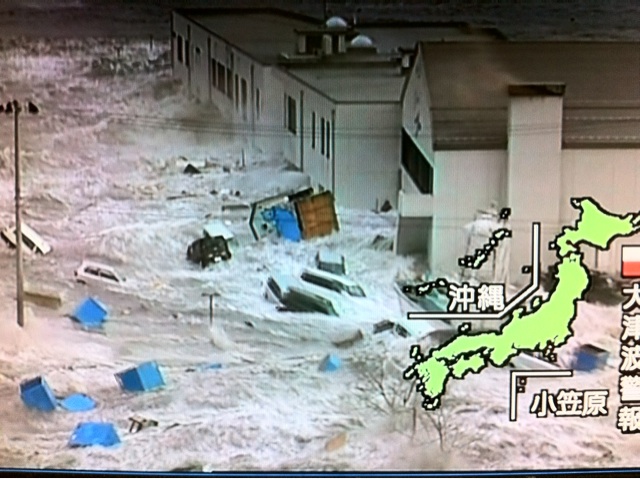 “Tsunami hot! Tsunami Image Onahama”Screengrab: @m577apc
“Tsunami hot! Tsunami Image Onahama”Screengrab: @m577apc
 “Just in: New photo — Massive tsunami wave captured by NHK cameras”Screengrab: @ProducerMatthew
“Just in: New photo — Massive tsunami wave captured by NHK cameras”Screengrab: @ProducerMatthew
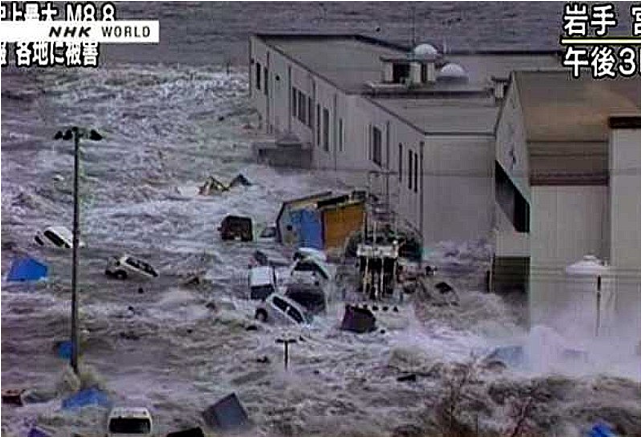 NHK TV
NHK TV
Related:
- Guess what else the GOP wants to cut? Tsunami monitoring!
- Japan is not a nuclear conflagration right now. Would we be so lucky?
